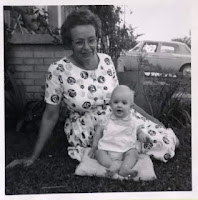March 4, 2021
Who doesn’t love pasta?! Lasagna, spaghetti, ravioli, cannelloni, penne, fettuccine. You name it, I love all noodles!!
The problem is that pasta is high in carbohydrates. It tends to spike my blood sugars – all night long, and even into the next morning.
I have found some pastas that do not spike my blood sugar, and actually taste like pasta. I have experimented with whole wheat noodles, and those are pretty good.
We’ve tried the chickpea pasta, butternut squash spirals, zucchini spirals, and spaghetti squash. I wasn’t too keen on the chickpea pasta. The veggie noodles are ok, but the zucchini and butternut squash spirals tend to get mushy.
What works for me ~
BUT… I have found some pasta that I really love, and it doesn’t create an outrageous blood sugar spike, so I can work it into my Type 2 diabetic diet. The pasta that I really like the most is called “carba-nada” by a company called al dente Pasta Company.
 |
| Image: My Type 2 Diabetic Life © |
Some of their pastas have gluten. Al dente also offers plant based pastas, so if gludent is not right for you, fortunately, you. still have options.
I thought that life as a Type 2 Diabetic would limit me to never eating pasta again. The best part is that I have discovered (with a lot of trial and error) it’s not IMPASTABLE! (See what I did there?)
Recently, I made a delicious meal of chicken scaloppini with carba-nada roasted garlic fettuccine tossed in basil pesto. It was super delicious!
 |
| Carba Nada Noodles Nutrition Image: My Type 2 Diabetic Life © |
Got your skillets ready?
It’s very easy to make. You just split a chicken breast in half, and pound it out with a your meat mallet. About 1 – 1½ inch thickness is good.
Dip the breast in a beaten egg (or not, if you don’t like or can’t eat eggs). Lightly coat it with Panko bread crumbs. Heat a skillet with about 2 tablespoons of olive oil.
Cook the chicken breast for about 4 minutes on each side, on a medium to low heat. (It should be 165° in the center, to be fully cooked. Be careful not to overcook, or it will be tough.) Place the cooked chicken on a plate to rest while the noodles finish cooking.
The carba-nada noodles should cook for 4 minutes in boiling chicken broth, a nice little trick to give the pasta more flavor.
Save that broth to use in the next step! Using tongs, take out all the noodles. Place in a low to medium heated skillet, with a couple of tablespoons of olive oil.
Get ready for delicious!
I use basil pesto that I get from Whole Foods Market. Toss the fettuccine around in the skillet (using tongs), adding the pesto a spoonful at a time. I totally eyeball it, as some people like more pesto, others like less. Image: My Type 2 Diabetic Life ©
Add a quarter cup of the broth at a time. It will keep the pasta and pesto from drying out in the skillet. This takes all of about 3 minutes. Don’t toss it too long in the skillet. I’m sure you’ll agree with me, that you don’t want to overcook your pasta.
 |
| Image: My Type 2 Diabetic Life © |
This is a great way to satisfy my craving for pasta, without sabotaging my blood sugars.
Finally settled in…
I know it’s been some time since I’ve posted. I’ve been pretty busy, but also have had a writer’s block. Now that things have found their place in our new house, I’m able to sit down to think and write more.
I hope you’ve enjoyed the blog post, and that you’ll take a look at all the pasta options that are out there.
Thanks for stopping by to read my blog. I love to get comments and hear what you have to say. Feel free to leave me a comment below. I hope that you’ll subscribe – top right corner of the page if on a desktop, and bottom of the post if using a mobile device.
In the meantime, live well, and be well!
*Disclosure: This post may contain affiliate links.

















